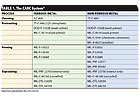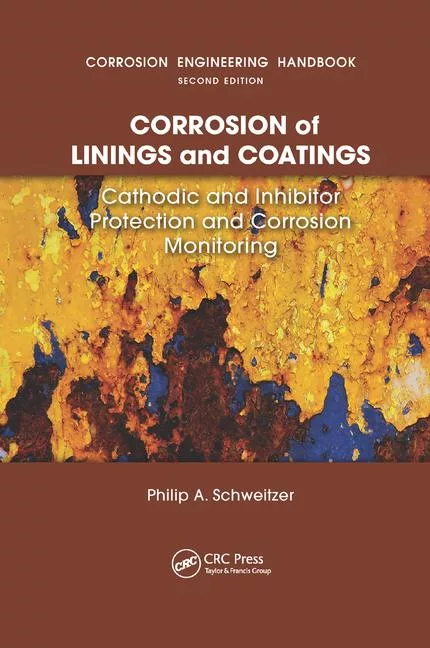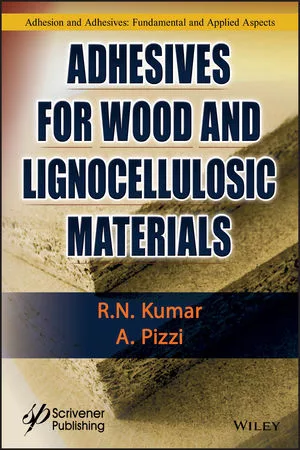Modern CARCs for Military Protection
The coatings used on military hardware must resist increasingly sophisticated chemical and biological weapons. Moreover, they must also withstand the decontamination that typically involves a complete washdown with concentrated bleach and solvents. The chemical agent resistant coatings (CARC) system currently applied to virtually every tactical and combat vehicle in the U.S. Armed Forces is a vital component of the overall strategy of the U.S. Department of Defense (DOD) to protect soldiers from chemical and biological agent attacks. As the CARC system celebrates its 25th year in service, advances continue to be made to extend coating life, improve corrosion resistance, reduce environmental impact, enhance ease of use and make application processes more economical.

In the face of battle, today’s soldiers can never be too sure of what they might encounter. Warfare continues to become ever more sophisticated and dangerous. The chemical and biological weapons, or “agents of war,” that have been in use for hundreds of years have been refined over time into highly lethal and debilitating compounds. The coatings used on military hardware must resist these toxins. Moreover, they must also withstand the decontamination that typically involves a complete washdown with concentrated bleach and solvents.
The chemical agent resistant coatings (CARC) system currently applied to virtually every tactical and combat vehicle in the U.S. Armed Forces is a vital component of the overall strategy of the U.S. Department of Defense (DOD) to protect soldiers from chemical and biological agent attacks. The military coating system also provides visual and infrared camouflage, while keeping the vehicles operational by providing sustained corrosion protection. On July 14, 2007, CARC quietly celebrated somewhat of a milestone. On that date 25 years ago, the first approval for the most widely used U.S. Army coating system was issued by Department of the Army’s Mobility Equipment Research & Development Command located at Fort Belvoir, VA. Since that time, the system has evolved into the most technically advanced military vehicle coating system in the world.

The CARC system was originally developed to address three major coating-related challenges that were identified by the Army in the late ’70s: environmentally responsible corrosion control, chemical and biological agent decontamination, and camouflage through pigmentation and infrared reflectance to avoid detection. The primers and topcoats of the day that were primarily alkyd systems that did little to assist in achieving these goals.
In the late ’70s, the U.S. was in the process of enacting many laws that regulated the use of some heavy metals that were commonplace in the coatings industry. Two of these heavy metals, lead and chrome, were used extensively in the manufacture of primers and topcoats. The Army wanted to eliminate the use of these heavy metals in their coatings and implement new regulations as it developed the new coating systems. The mandate was issued to all manufacturers of military vehicles, including Oshkosh Truck. Oshkosh Truck enlisted one of its suppliers, Hentzen Coatings, to see if the company could make a product that met the corrosion control criteria while eliminating the heavy metals. The Hentzen lab had previously developed a product for commercial applications that met almost all of the new Army criteria. This product was slightly reformulated, and the resulting product - a two-component (2K), lead- and chrome-free epoxy primer - was eventually the basis for the MIL-P-53022 specification. Although there have been some upgrades in performance, the basic formulation for all of the MIL-P-53022 Type I primers is essentially the same today as it was back then.
Hentzen also formulated a 2K polyurethane topcoat that met the other goals of the Army’s coating team. The new system had very low light reflectance (less than 1.5% at 60 degrees), a defined infrared signature and, most importantly, the ability to be chemically and biologically decontaminated. The decontamination requirement grew out of the cold war and the practice of the Soviet Union stockpiling biological and chemical weapons. These weapons could potentially be used more effectively than conventional weapons on vehicles. The agents of war, as they are called, could render vehicles unusable by delivering a mist or aerosol of a toxic agent that would cover their exteriors. If this type of an attack occurred, the Army wanted to ensure the safety of the soldiers and allow the vehicle to be returned to service by the use of a decontamination process. The original decontaminating agent used at that time was very basic (high pH) and would deteriorate most coating systems. The new topcoat had to withstand the aggressive decontaminating agent without discoloring or losing adhesion. The Hentzen topcoat withstood the process and was eventually the basis for the first CARC topcoat specification, MIL-C-46168.
In 1988, the MIL-P-53022 primer specification was changed to include a high-solids product. A Type II primer was formulated in response to tightening environmental regulations. The volatile organic compounds (VOCs) in the high-solids product is about half of the original, low-solids formulation.
Other specifications were added to the CARC system and identified in MIL-C-53072 for specific substrates or specific applications, such as MIL-C-22750 for interior topcoat applications and MIL-P-23377 for primer on non-ferrous substrates.
Water-Dispersible CARC Primer and Topcoat. In 1999, ARL and a number of the existing CARC suppliers completed work on two water-dispersible coatings. A topcoat listed under MIL-DTL-64159 offered a lower VOC option. The specification had two types that were differentiated by the flattening agent: MIL-DTL-64159 Type II introduced a new polymeric bead flattening agent instead of the traditional silica. This bead gave the Type II better mar resistance and weathering properties. Another water-dispersible coating, a primer, was also developed and approved under MIL-P-53030. Although these coatings offer an environmental advantage, their slower cure, propensity to blister and multiple-component technology continues to make the transition from their solvent counterparts difficult.
Cancellation of MIL-C-46168.As the VOC regulations became more restrictive and technology improvements were made to other CARC topcoats, the MIL-C-46168 became expendable. The MIL-C-46168 was easy to spray due to its lower solids and rarely blistered, making it a consistent coating for applicators. But its poorer weathering in the field and higher VOC content made it an easy target for removal. In October of 2005, the Army Research Lab canceled the specification.
Exempt Solvents.As the water-dispersible coatings reduced the VOC content to 1.5 lb/gal, manufacturers of CARCs began to take notice of the exempt solvents. These solvents were deemed to be less reactive in the atmosphere, so their addition to a formulation did not count toward VOCs. Hentzen was the first to gain approval of a 1.5 VOC solvent CARC topcoat in 2000 that offered all of the advantages of the solvent systems without the high VOCs. In late 2005, the MIL-C-53039 was altered to MIL-DTL-53039 and included the Type II designation for the new low-VOC, hazardous air pollutants (HAPs)-free formulations.
Removal of Chrome.In addition to VOC changes, chrome also was targeted by the military specification. As mentioned previously, the original MIL-P-53022 primer was formulated to exclude chrome. In 2000, the MIL-PRF-23377 and the MIL-PRF-85582 non-ferrous primers added a “Class N” designation to allow qualified non-chrome products to be included under the specification. The category has had a number of very promising products qualify in recent years, although their acceptance in the marketplace has been slow. The chromated version of the MIL-PRF-23377 is a time-tested aerospace standard. Aerospace manufacturers and the DOD have not fully bought into the effectiveness of these Class N replacements, and with the price tag of a fighter jet or helicopter in the hundreds of millions of dollars, field testing can get very costly. Some field evaluations are in progress, but they are not likely to have any conclusive results in the near future.
The Polymeric Bead.The polymeric-flattened CARCs, which now include the MIL-DTL-64159 and the MIL-DTL-53039, are the future of the topcoat program. The improved mar resistance and excellent weathering properties give the “beaded” coating a performance advantage. While the vast majority of CARCs sold today are the silica-flattened, this type of CARC will go the way of the MIL-C-46168 over the next three to five years. The “beaded” MIL-DTL-53039 will make the transition to this type of technology seamless, as it poses no application, curing or processing hurdles to current single-component users.
The most prominent and achievable goals for future CARC systems include extended life and improved corrosion resistance. Environmental aims such as lower or “zero” VOCs and the elimination of hexavalent chrome continue to be pursued. As always, enhanced ease of use and more economical processes remain in the sights of coating technologists. The use of QPL powder coatings within the CARC systems is close to becoming a reality. Other goals such as self-decontaminating coatings could eventually lead to the elimination of the decontamination process. The development of “stealthy” coatings for ground vehicles, which have the ability to destroy a heat image, have also been part of the CARC system discussion. All of these factors will ensure that the rate of change within the CARC system will continue at a relatively fast pace into the foreseeable future. These improvements will allow the CARC system to keep up with innovation, while continuing to fulfill its primary goal of protecting soldiers.

In the face of battle, today’s soldiers can never be too sure of what they might encounter. Warfare continues to become ever more sophisticated and dangerous. The chemical and biological weapons, or “agents of war,” that have been in use for hundreds of years have been refined over time into highly lethal and debilitating compounds. The coatings used on military hardware must resist these toxins. Moreover, they must also withstand the decontamination that typically involves a complete washdown with concentrated bleach and solvents.
The chemical agent resistant coatings (CARC) system currently applied to virtually every tactical and combat vehicle in the U.S. Armed Forces is a vital component of the overall strategy of the U.S. Department of Defense (DOD) to protect soldiers from chemical and biological agent attacks. The military coating system also provides visual and infrared camouflage, while keeping the vehicles operational by providing sustained corrosion protection. On July 14, 2007, CARC quietly celebrated somewhat of a milestone. On that date 25 years ago, the first approval for the most widely used U.S. Army coating system was issued by Department of the Army’s Mobility Equipment Research & Development Command located at Fort Belvoir, VA. Since that time, the system has evolved into the most technically advanced military vehicle coating system in the world.

Table 1.
(Editor's note: This table is the corrected version of the table that appeared in print.)
(Editor's note: This table is the corrected version of the table that appeared in print.)
The Origins of CARC
CARC is a specification-driven coating system. The specification outlines every aspect of this military finishing process, including coatings, cleaning, pretreatment and application. The organic coating portion of the specification details the substrate-specific primers and topcoats (see Table 1).The CARC system was originally developed to address three major coating-related challenges that were identified by the Army in the late ’70s: environmentally responsible corrosion control, chemical and biological agent decontamination, and camouflage through pigmentation and infrared reflectance to avoid detection. The primers and topcoats of the day that were primarily alkyd systems that did little to assist in achieving these goals.
In the late ’70s, the U.S. was in the process of enacting many laws that regulated the use of some heavy metals that were commonplace in the coatings industry. Two of these heavy metals, lead and chrome, were used extensively in the manufacture of primers and topcoats. The Army wanted to eliminate the use of these heavy metals in their coatings and implement new regulations as it developed the new coating systems. The mandate was issued to all manufacturers of military vehicles, including Oshkosh Truck. Oshkosh Truck enlisted one of its suppliers, Hentzen Coatings, to see if the company could make a product that met the corrosion control criteria while eliminating the heavy metals. The Hentzen lab had previously developed a product for commercial applications that met almost all of the new Army criteria. This product was slightly reformulated, and the resulting product - a two-component (2K), lead- and chrome-free epoxy primer - was eventually the basis for the MIL-P-53022 specification. Although there have been some upgrades in performance, the basic formulation for all of the MIL-P-53022 Type I primers is essentially the same today as it was back then.
Hentzen also formulated a 2K polyurethane topcoat that met the other goals of the Army’s coating team. The new system had very low light reflectance (less than 1.5% at 60 degrees), a defined infrared signature and, most importantly, the ability to be chemically and biologically decontaminated. The decontamination requirement grew out of the cold war and the practice of the Soviet Union stockpiling biological and chemical weapons. These weapons could potentially be used more effectively than conventional weapons on vehicles. The agents of war, as they are called, could render vehicles unusable by delivering a mist or aerosol of a toxic agent that would cover their exteriors. If this type of an attack occurred, the Army wanted to ensure the safety of the soldiers and allow the vehicle to be returned to service by the use of a decontamination process. The original decontaminating agent used at that time was very basic (high pH) and would deteriorate most coating systems. The new topcoat had to withstand the aggressive decontaminating agent without discoloring or losing adhesion. The Hentzen topcoat withstood the process and was eventually the basis for the first CARC topcoat specification, MIL-C-46168.
Visual Enhancements
The current color pallet for the CARC topcoats was defined in the release of MIL-C-53039. This was well after the approval of the first CARC topcoats. These colors were identified by the camouflage group within the Army as the best for numerous visual effects. Some matched certain non-specific terrains while others matched particular theaters of war. Many of the colors came from the meetings held by the NATO countries in an attempt to unify the colors of the vehicles used by the alliance. Some of the common names of the colors come from the dates during which these NATO meetings were held. For instance, the common green CARC paint, Fed Color Std 34094 Green, or “383 Green,” derives its name from the NATO group that met in March of 1983. The color “686 Tan” was presented to a NATO group that met in June of 1986. Ultimately, the unification project failed, and the U.S. was one of the few countries to adopt these colors.Improved Formulations
By the early ’80s, the 2K CARC primer and topcoat had replaced almost all of the alkyd-based coatings at the major military contractors and OEMs. In early 1983, a formulator named Bhaskar Urs introduced a new single-component, moisture-cured CARC paint. This was one of many contributions Urs would make to the military coatings market while working independently and as the technical director at Hentzen Coatings for the past 20 years. The new single-component product eventually became the basis for the MIL-C-53039 specification. Although there were early technical hurdles to overcome, the coating’s ease of use made it a natural choice for the CARC paint community. This mil spec in its current form, MIL-DTL-53039, now accounts for more than 85% of all CARC topcoat usage.In 1988, the MIL-P-53022 primer specification was changed to include a high-solids product. A Type II primer was formulated in response to tightening environmental regulations. The volatile organic compounds (VOCs) in the high-solids product is about half of the original, low-solids formulation.
Other specifications were added to the CARC system and identified in MIL-C-53072 for specific substrates or specific applications, such as MIL-C-22750 for interior topcoat applications and MIL-P-23377 for primer on non-ferrous substrates.
Environmental Changes
Many of the developments for new variants of military specification coatings over the last 20 years have been driven by environmental requirements and goals. As with all coatings, formulations have been adapted to accommodate decreasing VOC limits and reduced heavy metal content. The Army Research Lab addressed these issues by developing two new, water-dispersible specifications and canceling the original CARC topcoat. The specifications also were altered to include environmentally friendly types and classes to capture the changes that were being introduced by the military coating manufacturers.Water-Dispersible CARC Primer and Topcoat. In 1999, ARL and a number of the existing CARC suppliers completed work on two water-dispersible coatings. A topcoat listed under MIL-DTL-64159 offered a lower VOC option. The specification had two types that were differentiated by the flattening agent: MIL-DTL-64159 Type II introduced a new polymeric bead flattening agent instead of the traditional silica. This bead gave the Type II better mar resistance and weathering properties. Another water-dispersible coating, a primer, was also developed and approved under MIL-P-53030. Although these coatings offer an environmental advantage, their slower cure, propensity to blister and multiple-component technology continues to make the transition from their solvent counterparts difficult.
Cancellation of MIL-C-46168.As the VOC regulations became more restrictive and technology improvements were made to other CARC topcoats, the MIL-C-46168 became expendable. The MIL-C-46168 was easy to spray due to its lower solids and rarely blistered, making it a consistent coating for applicators. But its poorer weathering in the field and higher VOC content made it an easy target for removal. In October of 2005, the Army Research Lab canceled the specification.
Exempt Solvents.As the water-dispersible coatings reduced the VOC content to 1.5 lb/gal, manufacturers of CARCs began to take notice of the exempt solvents. These solvents were deemed to be less reactive in the atmosphere, so their addition to a formulation did not count toward VOCs. Hentzen was the first to gain approval of a 1.5 VOC solvent CARC topcoat in 2000 that offered all of the advantages of the solvent systems without the high VOCs. In late 2005, the MIL-C-53039 was altered to MIL-DTL-53039 and included the Type II designation for the new low-VOC, hazardous air pollutants (HAPs)-free formulations.
Removal of Chrome.In addition to VOC changes, chrome also was targeted by the military specification. As mentioned previously, the original MIL-P-53022 primer was formulated to exclude chrome. In 2000, the MIL-PRF-23377 and the MIL-PRF-85582 non-ferrous primers added a “Class N” designation to allow qualified non-chrome products to be included under the specification. The category has had a number of very promising products qualify in recent years, although their acceptance in the marketplace has been slow. The chromated version of the MIL-PRF-23377 is a time-tested aerospace standard. Aerospace manufacturers and the DOD have not fully bought into the effectiveness of these Class N replacements, and with the price tag of a fighter jet or helicopter in the hundreds of millions of dollars, field testing can get very costly. Some field evaluations are in progress, but they are not likely to have any conclusive results in the near future.
The Polymeric Bead.The polymeric-flattened CARCs, which now include the MIL-DTL-64159 and the MIL-DTL-53039, are the future of the topcoat program. The improved mar resistance and excellent weathering properties give the “beaded” coating a performance advantage. While the vast majority of CARCs sold today are the silica-flattened, this type of CARC will go the way of the MIL-C-46168 over the next three to five years. The “beaded” MIL-DTL-53039 will make the transition to this type of technology seamless, as it poses no application, curing or processing hurdles to current single-component users.
Future Trends
There are no official estimates by the government on the size of the CARC market. The varied applications by OEMs, government installations and subcontractors make the number difficult to identify, but unofficial estimates range from $75 million to $250 million. Both the market and the products available within the CARC specifications have grown considerably over the past 20 years.The most prominent and achievable goals for future CARC systems include extended life and improved corrosion resistance. Environmental aims such as lower or “zero” VOCs and the elimination of hexavalent chrome continue to be pursued. As always, enhanced ease of use and more economical processes remain in the sights of coating technologists. The use of QPL powder coatings within the CARC systems is close to becoming a reality. Other goals such as self-decontaminating coatings could eventually lead to the elimination of the decontamination process. The development of “stealthy” coatings for ground vehicles, which have the ability to destroy a heat image, have also been part of the CARC system discussion. All of these factors will ensure that the rate of change within the CARC system will continue at a relatively fast pace into the foreseeable future. These improvements will allow the CARC system to keep up with innovation, while continuing to fulfill its primary goal of protecting soldiers.
Looking for a reprint of this article?
From high-res PDFs to custom plaques, order your copy today!






